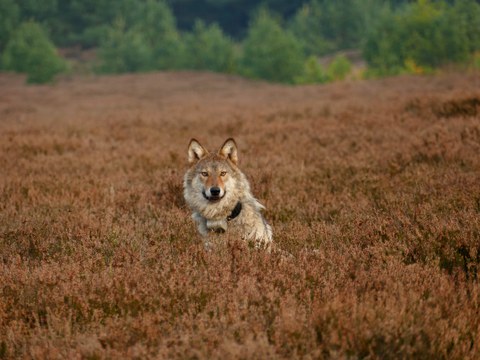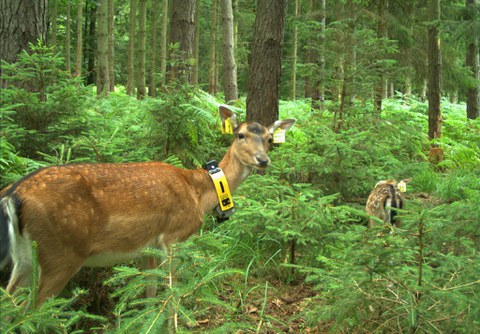Untersuchung zum Einfluss des Wolfes auf Schalenwild, Schwerpunkt Damwild
Auftraggeber/Finanzierung: Ministerium für Landwirtschaft, Umwelt und Verbraucherschutz Mecklenburg-Vorpommern, Deutscher Jagdverband e.V. Berlin, Gut Stieten GmbH & Co. KG, Freundeskreis freilebender Wölfe e.V. Much-Marienfeld
Projektmitarbeiter: Dr. Norman Stier, M. Sc. Vendula Meißner-Hylanová, M.Sc, Maria Kruk, Dipl.-Geoökol. Marcus Borchert
Laufzeit: 2015–2024
Wir arbeiten aktuell noch an dem Abschlussbericht, sobald dieser fertig ist, gibt es diesen unter "Forschungsberichte" zum Download.
Zur Lösung der Mensch-Wild-Wolf-Konflikte – auch als Voraussetzung für ein erfolgreiches Management der Arten - sind fundierte Kenntnisse über die Wechselbeziehungen zwischen Wildtieren und ihrer Umwelt unabdingbare Voraussetzung.
Ziel dieses Forschungsprojektes ist es, das Raum-Zeit-Muster von Damwild und Wölfen im gemeinschaftlichen Lebensraum in Mecklenburg-Vorpommern zu erfassen. Eine bundeslandweite Erfassung und Analyse von Losungsproben zur Ermittlung des Beutespektrums des Wolfes sollen den Forschungsansatz ergänzen. Anhand der Peildaten von Wölfen werden Risse lokalisiert und diese hinsichtlich Präferenz der Wölfe bei Art, Alter, Geschlecht und Nutzungsgrad analysiert. Anhand der Anteile von telemetriertem Damwild, das von Wölfen erbeutet wurde, sollen Mortalitätsraten ermittelt werden. Darüber hinaus fokussiert die Studie auf die Analyse der Mutter-Kind-Beziehung beim Damwild.
Bis zum 31.12.2022 wurden 34 (17 Damhirsche, 17 Alt/Schmaltiere) statt der geplanten 20 Stücken adulten Damwildes mit GPS-GSM-Halsbandsendern markiert. Außerdem gelang es erstmals in der Damwildforschung eine größere Anzahl an frisch geborenen Damkälbern (84) mit Miniaturohrmarkensendern auszustatten. Fünf dieser mit Ohrmarkensendern markierten Damkälber konnten im Alter von 1-3 Jahren mit einem GPS-Halsbandsender umbesendert werden. Insgesamt fünfmal gelang es, das Kalb eines besenderten Alttieres zu markieren, so dass eine Verschneidung der Peildaten von Alttier und Kalb möglich sind. Auch dies ist bisher einmalig in der Damwildforschung.
Die Vielzahl an Ergebnissen bilden die Grundlage für die Entwicklung von übertragbaren Konzepten zur langfristig nachhaltigen Bewirtschaftung von Schalenwild bei vorhandener Wolfsbesiedlung.


